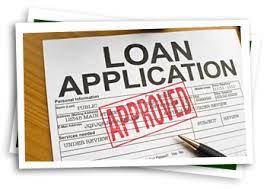
How To Apply For Personal Loan
A personal loan is money you borrow for just about any purpose, including debt consolidation, an unexpected medical bill, a new appliance, a vacation, or even a student loan. You pay the money back—including interest—in monthly installments over time, usually two to five years, Most personal loans are unsecured, meaning they are not backed by collateral.
The interest you pay is expressed as an annual percentage rate (APR). The average APR on a personal loan is 9.41% as of June 2019, but it can range from 6% to 36% depending on your creditworthiness, including an examination of your income, debts, and credit score.12
KEY TAKEAWAYS
- A personal loan can be used for almost any reason, from debt consolidation to unexpected doctor bills to taking a vacation.
- Most personal loans do not require collateral, which makes them unsecured loans.
- Personal loans must be paid back over a set term, usually two to five years.
- The best personal loans will depend a lot on your creditworthiness and why you need the loan.
How to Qualify for a Personal Loan
There are many steps to take to qualify for a personal loan, with the first being to make sure that it’s right for you. For example, if you want to borrow money to remodel your house or buy a car, a home equity loan or an auto loan may come with a lower interest rate. Unlike unsecured personal loans based solely on your creditworthiness, these loans are secured by the home you want to fix up or the car you want to buy.
Although paying for a family vacation or consolidating debt fits into the personal loan category, you may also want to check into a 0% introductory APR credit card. If you go that route, however, be sure that you can pay off the balance before the 0% rate expires.
9.41%
The average annual percentage rate on a personal loan as of June 2019
Decide How Much to Borrow
Remember that when you borrow money, you don’t just pay back the original loan. Except for that 0% card, paid off on time, you also pay interest or “rent” on the money you borrow. There’s no reason to pay interest on the money you don’t need, so only borrow what is necessary. On the other hand, if you borrow less than you need, you may be forced to turn to more expensive loan sources at the last minute.
Finally, make sure you can afford the payments on the amount you do borrow. There’s nothing worse than overextending yourself financially if the best thing would have been to wait a while until your finances improve.
Check Your Credit
As personal loans rely heavily on your creditworthiness, check your credit scores and obtain updated credit reports from each of the three major credit reporting agencies—Equifax, Experian, and TransUnion—before you apply. None of these actions, referred to as soft inquiries, will impact your creditworthiness or credit score. That only happens when you apply for a loan and the lender makes what’s known as a hard inquiry.
You can obtain a free credit report from each of the major reporting agencies once per year by visiting AnnualCreditReport.com. Many credit card and loan companies provide a free monthly credit score from one or more of the major credit reporting agencies. Services such as Credit Karma offer free credit scores, credit reports, and other financial services. Some, like Credit Karma, are actually free. Others offer a free trial then charge an ongoing fee. You can also pay for your credit score from credit reporting agencies or from other online vendors.3
The higher your credit score, the more likely you are to be approved for a loan at a better interest rate.
LendingTree reported the following average best personal loan APRs and loan amounts based on credit score for April 2021.4
Offers vary by lender, but the information above may provide guidance about what to expect when you apply for a personal loan. Additionally, a personal loan calculator can make it easier to determine how high of a monthly payment you might end up with based on your credit score.
Know Your Rights Under Regulation Z
In 1968 the Federal Reserve Board (FRB) implemented Regulation Z which, in turn, created the Truth in Lending Act (TILA), designed to protect consumers when making financial transactions. Personal loans are part of that protection. This regulation is now under the auspices of the Consumer Financial Protection Bureau (CFPB).
Subpart C–Sections 1026.17 and 1026.18 of the TILA require lenders to disclose the APR, finance charge, amount financed, and total of payments when it comes to closed-end personal loans. Other required disclosures include the number of payments, monthly payment amount, late fees, and whether there is a penalty for paying the loan off early.56
Where to Obtain a Personal Loan
Personal loan sources are divided between two main categories: those with a banking license or charter and those without. The main distinction between the two categories involves regulation.
Banks and Credit Unions
Institutions with a banking license or charter are governed by the Federal Reserve, Federal Deposit Insurance Corporation (FDIC), Office of the Comptroller of the Currency (OCC), and the National Credit Union Administration (NCUA).7
Local banks and credit unions are the first places many people think of when contemplating a personal loan. If you apply there, you will likely meet face to face with a loan officer, the experience will be personalized, and the officer can guide you through the application process smoothly. Compared to other options, banks tend to have higher loan qualification standards. If you are already a customer, the bank may cut you a break in that area, though.
The credit union qualification process tends to be less rigid than that of banks, and interest rates there are typically lower than at banks. You must, however, be a member in order to do business there. Neither banks nor credit unions typically charge loan origination fees, which is a plus.
Non-Banking Financial Institutions (NBFIs)
Sources without a banking license are known as non-banking financial institutions (NBFIs) or non-banking financial companies (NBFCs). The main difference in terms of services is that NBFIs cannot accept deposits. NBFIs fall under the 2010 Dodd-Frank Wall Street Reform and Consumer Protection Act and are under the supervision of the CFPB.89
NBFIs include online and brick-and-mortar finance companies, insurance companies, peer-to-peer (P2P) lenders, payday lenders, and other non-bank entities. Finance companies typically charge higher interest rates than banks or credit unions, but they may approve you for a loan when a bank won’t. P2P lenders may offer low-interest rates if your credit is good, but much worse rates than banks if you are considered a credit risk. Payday loans are notoriously bad loans, charging high-interest rates and often hidden fees.
Check Your Eligibility
Visit lender websites or make phone calls to determine if your financial profile makes you eligible for a loan from that lender. Find out if there is a minimum required credit score and whether there is an income threshold. Determine if there’s a required minimum length of credit history—three years or more is common—and what is considered an acceptable debt-to-income ratio.
Compare Personal Loan Rates With Our Partners at Fiona.com
Get Prequalified
Once you’ve eliminated loans for which you are ineligible, turn to lenders most likely to give you a loan. Many lenders offer to prequalify or preapprove you with a soft inquiry. Prequalification or preapproval does not guarantee you will get the loan—only that you fit the general financial profile of people to whom the lender has lent money in the past.
Getting prequalified typically means filling out a short form online in which you provide your name, address, income, and the amount you want to borrow. The lender will conduct the soft credit inquiry mentioned above and notify you—sometimes within seconds, sometimes a couple of days later—that you have or have not prequalified for a loan.
Check Out the Details
Now that you know you are prequalified, it’s time to prequalify the lender. Go through information and disclosures in your preapproval letter and revisit the website to look for the following:
- Expected Loan Amount, APR, Monthly Payment, and Loan Term. It may or may not be exact, but it will give you something with which to compare other preapproved loans.
- Fees and Penalties. Will this loan have an origination fee? If so, how much? What are the penalties or fees for late or missed payments? Are there any other charges?
- Type of Interest. Is the interest rate fixed or variable? Do I have a choice, and, if so, what’s the difference in rates?
- Unsecured or Secured. Will this be an unsecured or secured loan? For a secured loan, what is required collateral?
- Automatic Withdrawal. Are automatic withdrawals of monthly payments mandatory or optional? If optional, will I get a lower interest rate if I agree to automatic withdrawals?
- Arbitration. In the event of a conflict, is arbitration mandatory, or can I take the lender to court?
- Prepayment Penalty. If I pay my loan off early, will I pay a penalty?
- Fine Print. There’s always fine print, even in preapproval letters. Look for anything not answered above or anything you hadn’t thought of.
Apply for the Loan
Once you’ve narrowed the field, it’s time to apply for a loan. If you plan to apply with more than one lender, try to bunch your applications together within a 14-to-30-day period. This is known as “rate shopping,” and multiple inquiries will be treated as one, having a smaller impact on your credit score.
Your preapproval letter should tell you what additional documentation is required for an actual application. Gather those documents up first. You will likely be required to provide proof of income (pay stubs, W2 forms), housing costs, debt, an official ID, and Social Security number (if not provided for the preapproval). Submit your application and documentation and await the results.
Close the Loan
Approval and funding times vary by lender, but you can expect something close to the following.
Once you are approved—ideally, for more than one loan—pick the one you like best, sign the papers, obtain funding. Then, of course, get ready for the next part: paying back the loan.
What Are the Different Types of Personal Loans?
The different types of personal loans are:
- Debt-consolidation loan: rolls multiple debts into one new loan
- Co-signer loan: a loan you need a co-signer to qualify for
- Secured and unsecured loans (unsecured are more common)
- Fixed and variable rate loans (fixed are more common)
Where Can You Find a Personal Loan?
You can find a personal loan in the following places:
- Your bank or credit union
- A peer to peer lending site
- An online loan provider
- A referral from a friend or family member
- A private loan from an investor
Can You Get Pre-Qualified for a Personal Loan?
Yes, you can usually get pre-qualified for a personal loan within a few minutes online. You fill out some personal information such as how big of a loan you need, your income, address, and other considerations. You can see which loans you are likely to qualify for and then compare them for the best rates and terms. Keep in mind that a pre-qualification means that you’re likely to qualify for the loan, but it is not a guarantee.
Are Personal Loans Secured?
Personal loans are typically not secured. This means that you don’t need collateral such as your house or car to secure the loan. Instead, you receive the loan based on your financial history, including your Fico score, your income, and any other lender requirements you must meet.


